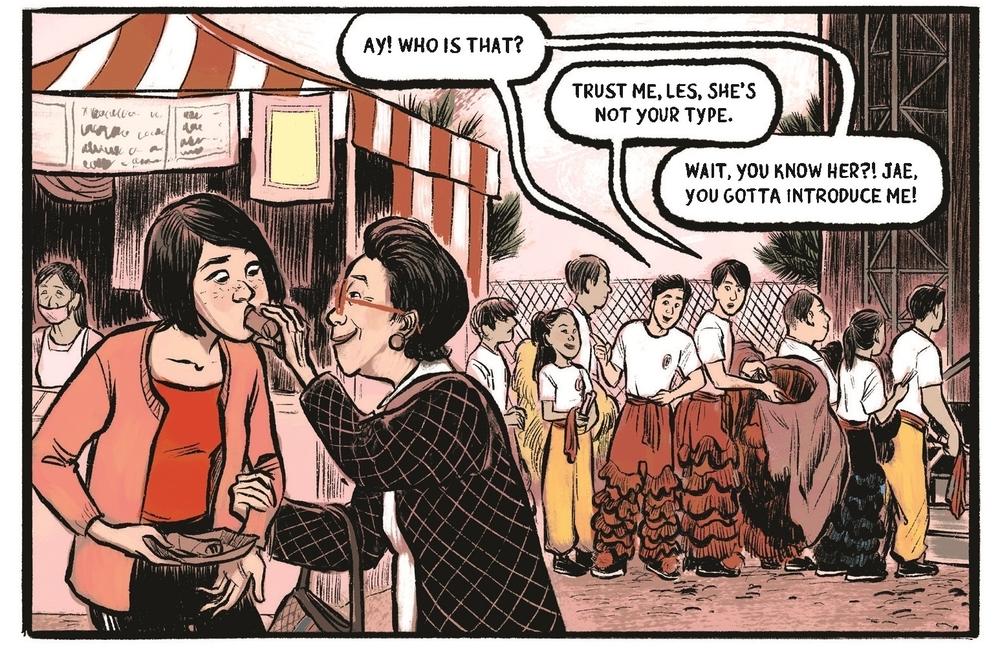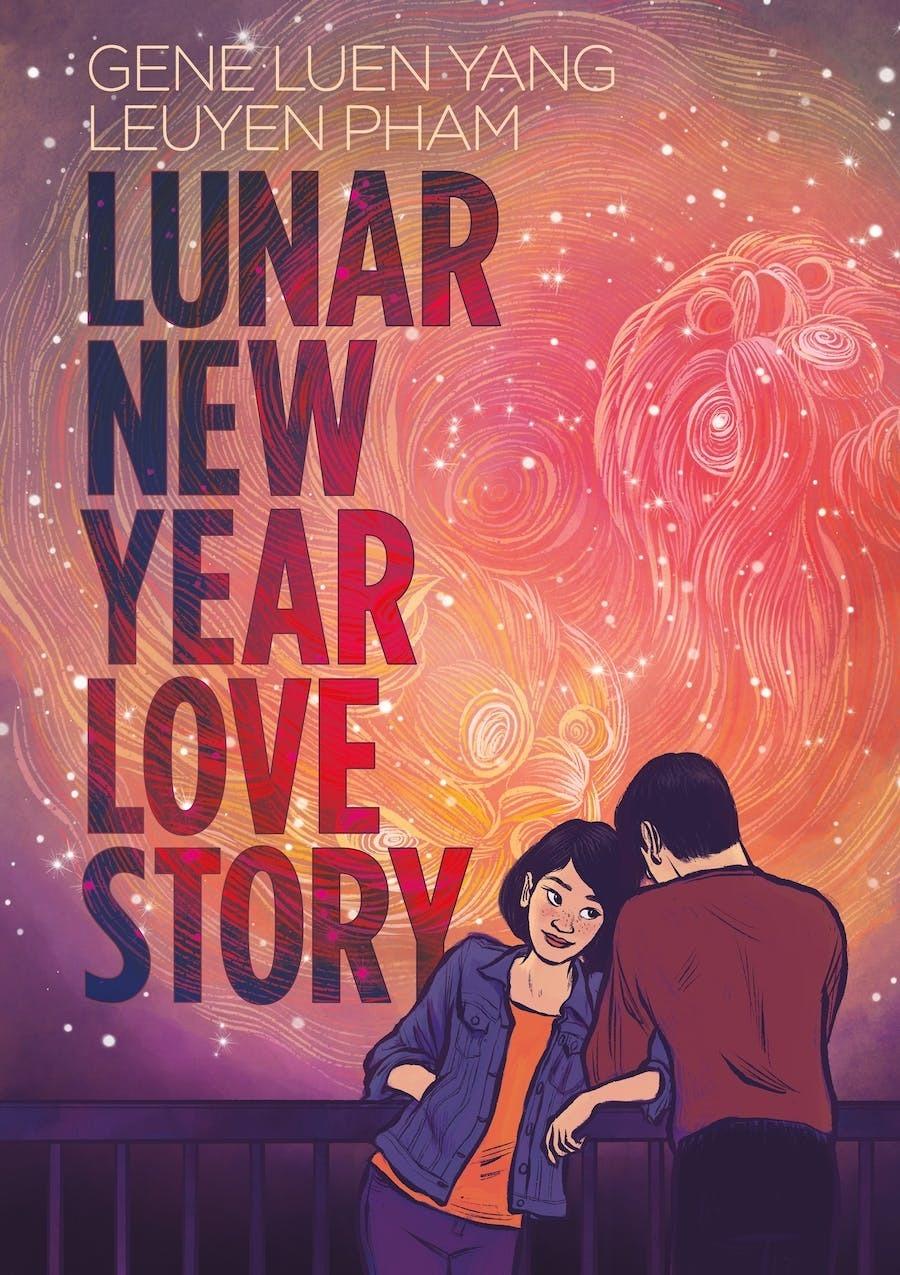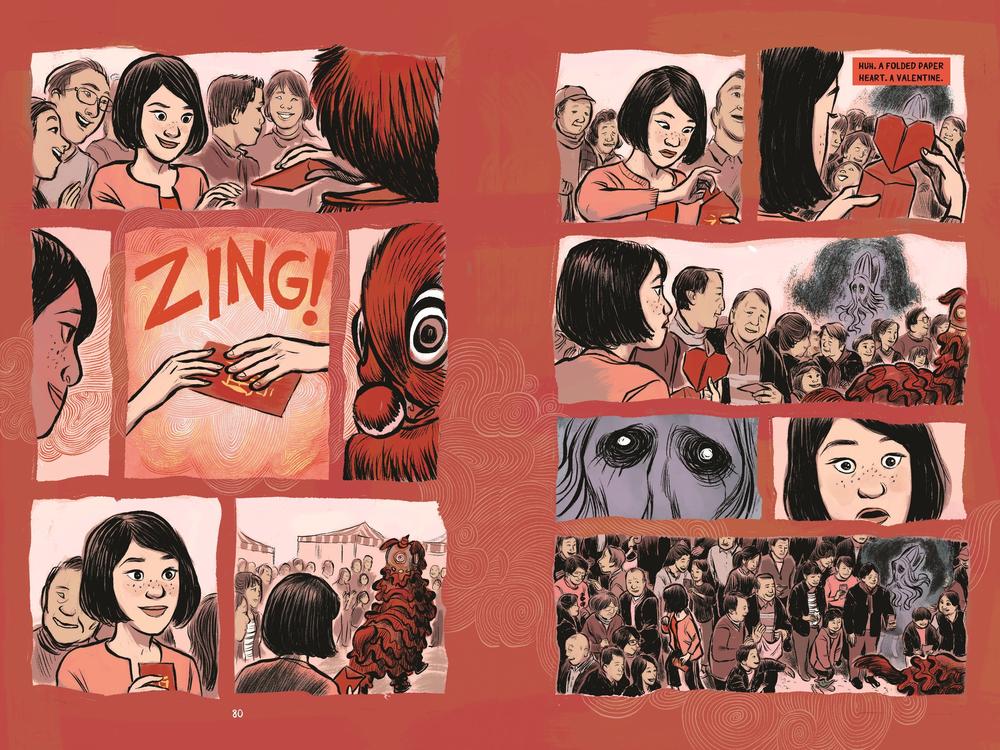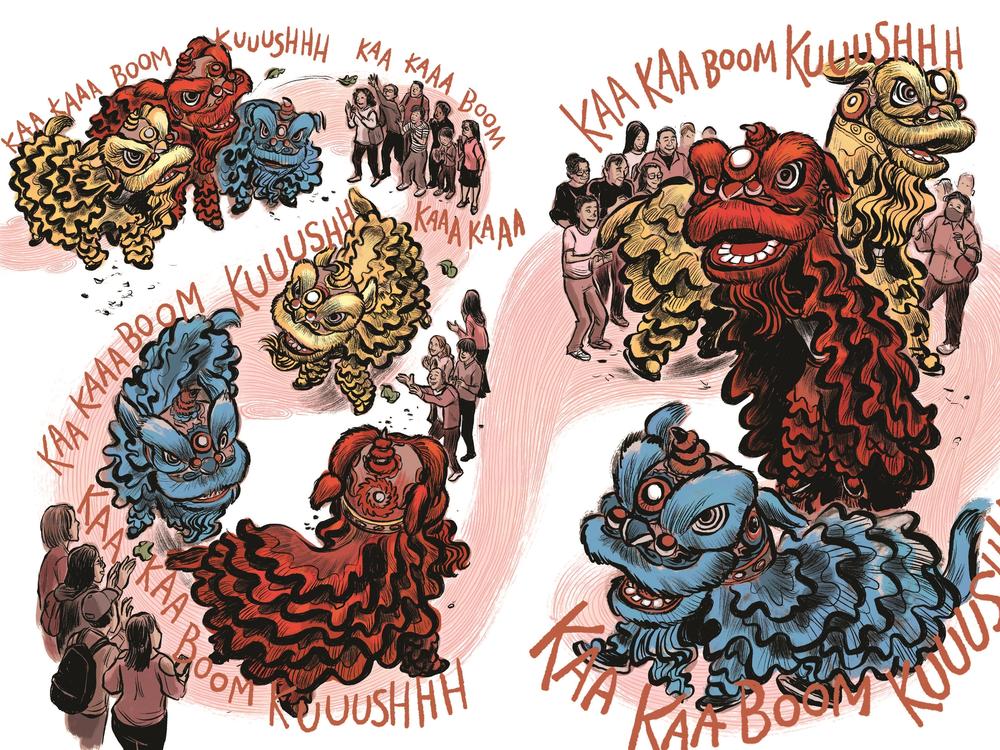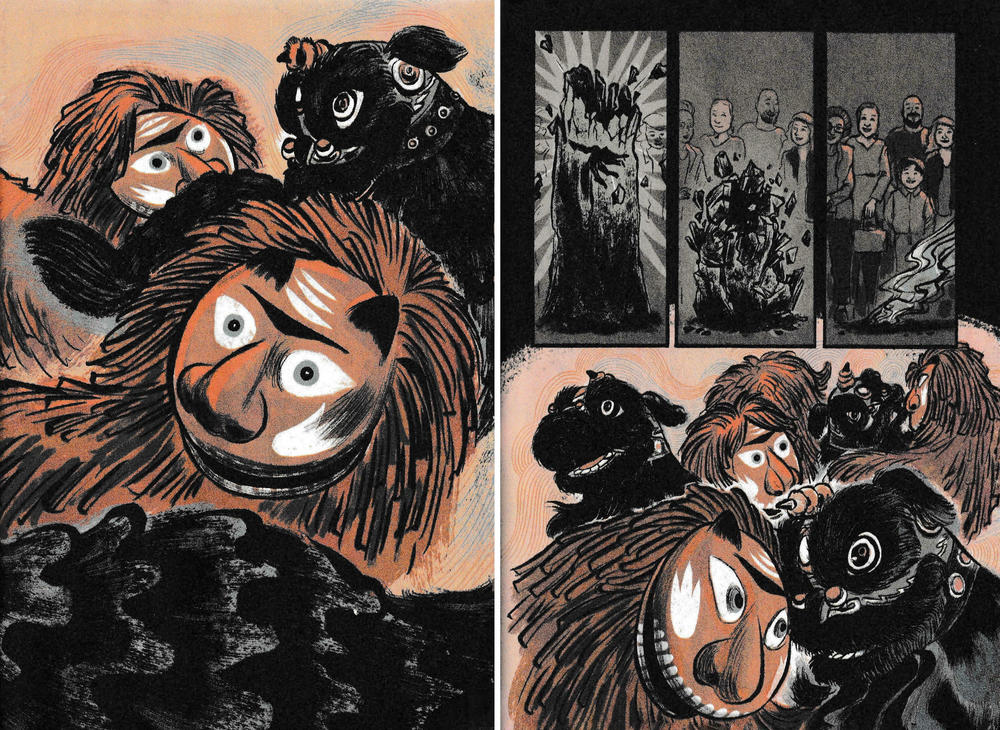Section Branding
Header Content
'Lunar New Year Love Story' celebrates true love, honors immigrant struggles
Primary Content
Since the Lunar New Year generally falls between Jan. 21 and Feb. 20, at times this holiday closely precedes or coincides with Valentine's Day. (This year — the Year of the Dragon — begins on Feb. 10).
By its very title, Lunar New Year Love Story, gorgeously rendered in graphic novel form by Gene Luen Yang and LeUyen Pham, deftly grafts the symbolism of these two holidays to create a rich tapestry of complimentary worldviews. Celebrating true love but also acknowledging the dark forces that haunt refugee and immigrant lives in transition, this YA graphic novel attains epic dimensions in capturing the complex, bittersweet journeys of its fully-realized characters.
Specifically, the lion dance, an important Asian ritual featured in every auspicious occasion — including New Years, weddings, and business openings — serves as a counterpoint to Valentina's unscripted yet ultimately illuminating quest into her own heart. Unsure if she is fated to repeat her ancestors' romantic mistakes, this young Vietnamese American high school student is accompanied throughout her hero's journey by various manifestations of St. Valentine (apparently her parents had named her after this saint's holiday to commemorate her conception). Valentina's supernatural companion appears first as Cupid, then as a malevolent spirit who constantly tries to finagle Valentina into a Faustian bargain, and finally as the historical saint of third-century Rome who ministered to persecuted Christians and whose martyrdom has been commemorated world-wide on Feb. 14.
In equal measure, Lunar New Year Love Story explores the lion symbol associated with the yin/yang life forces in Asian culture, as well as its embodiment of both "majesty and misery" in Christianity — the Western lion is Christ's avatar and also the death sentence that befell Christian martyrs in ancient Rome. This dual, transcontinental symbol of life and death, truth and mystery, reason and emotion, male and female, gracefully captures the complicated heritage of characters impacted by their parents' diasporic experiences.
In creating a fluid balance of opposing forces, the graphic novel illustrates sentimentality as an infantile approach employed by Valentina's father to protect his daughter and his own wounded heart. Initially, Valentina's rosy-hued perception of her father's love for her presumed dead mother takes the form of Cupid — but this idealization morphs shockingly into a dead ringer for Francis Bacon's Study After Velásquez's Portrait of Pope Innocent X once she discovers the truth.
Feeling betrayed, Valentina, who has a background in ballet, finds respite at Liu's Kung Fu Dance Studio, where she focuses her energy into becoming an exemplary lion dancer. At this venue she meets two potential suitors/dance partners: Leslie, the extrovert son of a successful Chinese-American businessman, and Jae, Leslie's taciturn half Korean cousin. Like Valentina, Jae immerses himself in lion dancing to liberate himself from the grief caused by his father's untimely death.
In capturing the complex truths that these young people must face in their convergent paths, Lunar New Year Love Story expands cultural awareness via dynamic red-tone, borderless panels. Despite their specific ethnic backgrounds, Valentina, Jae, and their high school friends wholeheartedly embrace diverse aspects of their Oakland, Calif. milieu. Like the shapeshifting manifestations of St. Valentine, the lion dance that literally and metaphorically winds its way throughout the story features both the imperious lion-dragon or "foo dog" of Chinese tradition, and the Korean mop-head creature of the Bukcheong lion dance that resembles either a Hungarian Puli or a russet Cookie Monster — these are specific and transcultural symbols of strength and courage invoked in communal festivities to banish evil spirits. To have lion essence, Valentina and Jae must learn to dance together as one forthright entity divested of fears — defined as blue-tinged images trapped within darkly-etched frames. Embracing their nature as exuberant mongrels, they must reject the illusory idea of authenticity that has created barriers between groups. In one pivotal scene, Valentina emphatically refuses to be shamed when a pompous community leader berates her for losing her Vietnamese roots.
While unwilling to relive their parents' pasts, the characters' acceptance of uncomfortable truths reflects a desire to take ownership of their legacy. By the same token, Lunar New Year Love Story acknowledges the struggles faced by Valentina's predecessors who are first-generation refugees and immigrants.
A fitting book to inaugurate 2024, Lunar New Year Love Story uncannily evokes W.B. Yeats' poignant poem, "Among School Children" in weighing our timeless hopes against life's treacherous undertow. The famous poet, like the artist-authors of this dazzling graphic novel, urges us to embrace both romance and reality, "O body swayed to music, O brightening glance / How can we know the dancer from the dance?"
Thúy Đinh is a freelance critic and literary translator. Her work can be found at thuydinhwriter.com. She tweets @ThuyTBDinh.
Copyright 2024 NPR. To see more, visit https://www.npr.org.
